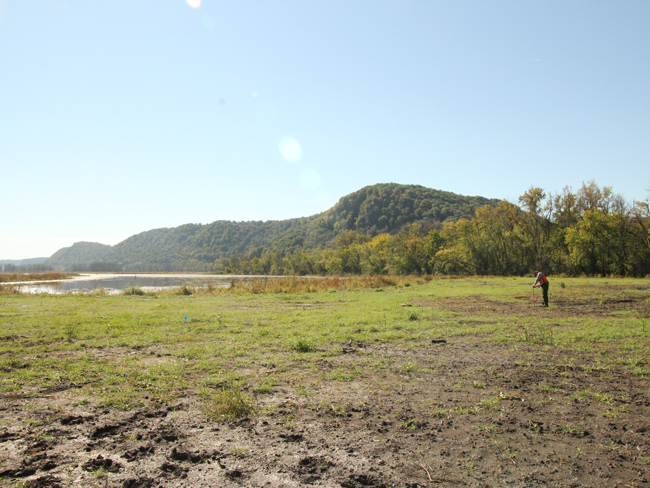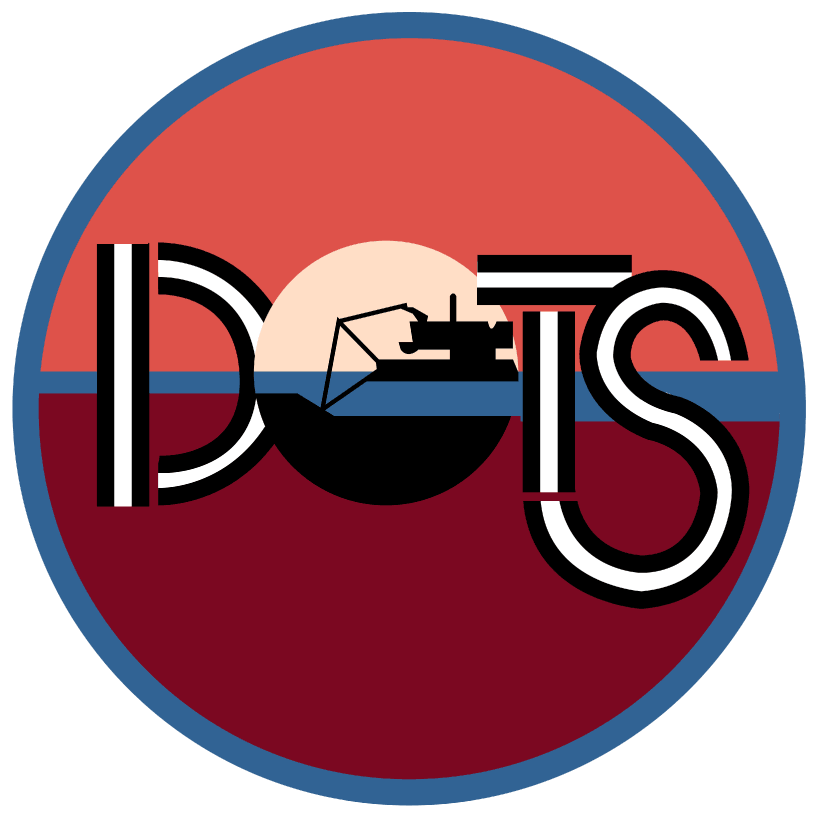CONWAY LAKE HABITAT REHABILITATION AND ENHANCEMENT PROJECT

- Title: Conway Lake Habitat Rehabilitation and Enhancement Project
- State: Iowa
- Project type: USACE
- Greater Beneficial Use Area: Upper Mississippi River National Wildlife and Fish Refuge
- Focus Area approximate center coordinates: 43.4049, - 91.2487
- Nearest Federal Navigation Project: Upper Mississippi River
- Owner: USACE St. Paul District
- Beneficial Use Categories: Aquatic Habitats, Wetland Habitats
- Dredge type: Mechanical
- Status: Ongoing
- Keywords: backwater, sedimentation, erosion, hydrologic connectivity, floodplain, habitat restoration
Description:
The backwater habitats along the upper Mississippi River have gained recognition for their value to nature, people, and institutions, capturing the interest of both natural resource agencies and the public. The region is an integral part of the Upper Mississippi River Restoration Program (UMRR), which was established under the Water Resources Development Act of 1986, marking the pioneering endeavor in the United States to concentrate on restoring and overseeing the environment of a major river system.
The UMRR Program has achieved numerous noteworthy milestones, one of which is the US Army Corps of Engineers (USACE) Conway Lake Habitat Rehabilitation and Enhancement Project (HREP), spanning 1,170 acres in Pool 9 of the upper Mississippi River. This project area plays a critical role in sustaining waterfowl and fish populations, serving as a vital backwater habitat.
The Conway Lake HREP is situated within the Upper Mississippi River National Wildlife and Fish Refuge managed by the US Fish and Wildlife Service (USFWS). The project area encompasses Conway Lake, Phillipi Lake, Zolls Lake, and Shore Slough as well as multiple islands and slough habitat. However, this area has experienced habitat degradation due to several factors, including sediment accumulation, erosion, reduction in water depth, undesirable changes in plant communities, and the impact of nutrients on water quality.
The reduction in water depths and increased nutrients has led to the excessive growth of undesirable aquatic plants and reduced levels of dissolved oxygen. This, in turn, has had a negative effect on fish species such as bluegill (Lepomis macrochirus), black crappie (Pomoxis nigromaculatus), and largemouth bass (Micropterus salmoides), particularly during the winter months. Additionally, the increased connection to the river’s water flow has intensified the erosive of backwater islands, exacerbating the frequency and intensity of currents. Consequently, this has contributed to the decline of floodplain forests, a decrease in species diversity, and the establishment of unsustainable conditions within the forest stands – characterized by mature trees with minimal understory growth and a shift towards species that are adapted to flooding.
Given the rapid decline in the quality of available backwater habitat, the need for restoration has become evident. This presented an opportunity to beneficially use dredged sediment to achieve the restoration objectives of the habitat, providing a promising solution for mitigating the environmental challenges faced by the area.
As part of a 2017 Project Feasibility Report and Integrated Environmental Assessment, habitat restoration goals were collaboratively developed by USACE St. Paul District, USFWS, Iowa Department of Natural Resources, and Wisconsin Department of Natural Resources. The focus of these goals was to restore and enhance the quality of overwintering fish habitat and floodplain forests in the area.
Construction activities commenced in in 2020, starting with the dredging of approximately 200,000 cubic yards of sediment from Conway Lake, Phillipi Lake, and Zolls Lake. The purpose of the dredging was to create deep water overwintering fish habitat. By increasing water depths to more than four feet in at least 50% of the project area, the team improved the habitat for numerous ecologically and recreationally important fish species.
Fine-grained silt and clay, dredged from the lakes, was strategically placed on top of a sand base obtained from a navigation dredging stockpile. This arrangement created berms that effectively raised the floodplain’s elevation while preventing inflows of water and sediment into the project area. The sediment used for the berm also functioned as a suitable medium for reestablishing floodplain vegetation and new native trees were planted. To improve the health and diversity of the existing floodplain forest, the project team aimed to achieve a planting success rate of over 75% for seedlings and the establishment of more than >2,100 naturally regenerating trees or shrub seedlings taller than one foot in the first year following planting. The berm and planted vegetation provide cover and nesting habitat for a variety of birds, reptiles, small mammals, and other wildlife.
The project was completed in 2022, resulting in the enhancement and creation of 215 acres of floodplain forest, 93 acres of off-channel, backwater fish habitat, and 25 acres of overwintering fish habitat.
The monitoring and adaptive management of the Conway Lake HREP are ongoing processes. The project team monitors key physical and biological characteristics to compare them with baseline conditions. This includes measuring water quality metrics such as depth, temperature, and dissolved oxygen, as well as observing the survivorship and growth of planted seedlings. To assess the restoration impacts on fish, fall electrofishing surveys are conducted to inventory fish species in the restored backwater and overwintering habitats. Furthermore, soil conditions in the constructed berm and rehabilitated floodplain forests are closely monitored. The team assesses a suite of sediment characteristics, such as organic matter content, grain size, bulk density, pH, total carbon, nitrogen, phosphorous, and moisture content.
The Conway Lake HREP serves as a prime example of the benefits achieved by “keeping sediment in the system.” The project demonstrates how leveraging synergies between sediment management and habitat restoration can lead to positive outcomes for the ecosystem.
Further readings:
- Berkowitz JF, Hurst NR. (2022). New initiatives improve wetland restoration outcomes: Engineering with nature and the use of natural and nature-based features. Wetland Science and Practice. 40(2):28–32.
- Theiling CH. (1995). Habitat rehabilitation on the Upper Mississippi River. Regulated Rivers: Research and Management. 11(2):227–238.
- Theiling CH, Janvrin JA, Hendrickson J. (2015). Upper Mississippi River restoration: Implementation, monitoring, and learning since 1986. Restoration Ecology. 23(2):157–166.
- Theiling CH, McFarlane A, Hurst N, Berkowitz J, Suedel B. (2022). Conway Lake Ecosystem Restoration: Soil Investigations to Support Engineering with Nature and Beneficial Use of Dredged Sediment. United States Army Corps of Engineers. May.
- USACE. (1994). Upper Mississippi River System Environmental Management Program Fact Sheet: Conway Lake, Pool 9, Upper Mississippi River, Iowa. December.
- USACE. (2017). Conway Lake Habitat Rehabilitation and Enhancement Project Feasibility Report and Integrated Environmental Assessment. P2# 114711. Upper Mississippi River Restoration Program. St. Paul District. August.
- USACE. (2023). Upper Mississippi River Restoration Program: Conway Lake, Lansing, Iowa. St. Paul District.
- USACE. (2020). Conway Lake HREP Mississippi River Pool 9 Overview Map. (pdf)
Website links:
- USACE. (2023). Conway Lake Habitat Restoration Project.
- USACE. (2023). St. Paul District Website.
- USACE. (2023). Navigation and Ecosystem Sustainability Program (NESP).
- USACE. (2023). Upper Mississippi River Restoration Program Website.
- USFWS. (2023). Upper Mississippi River Restoration Program Website.
News releases:
- Ganic E. (2022). Ribbon Cutting for Harpers Slough and Conway Lake Projects. Dredging Today. July 21.

